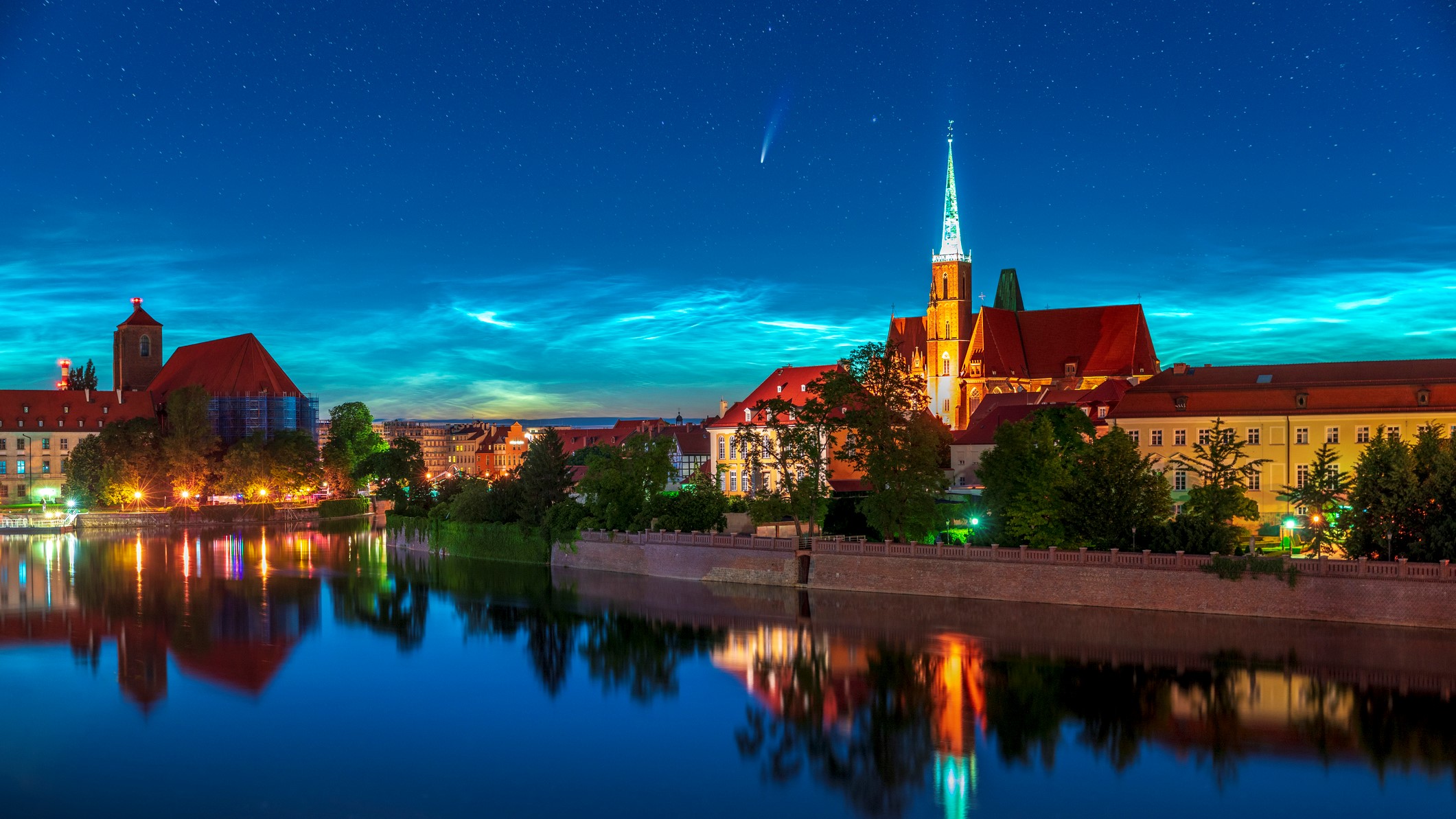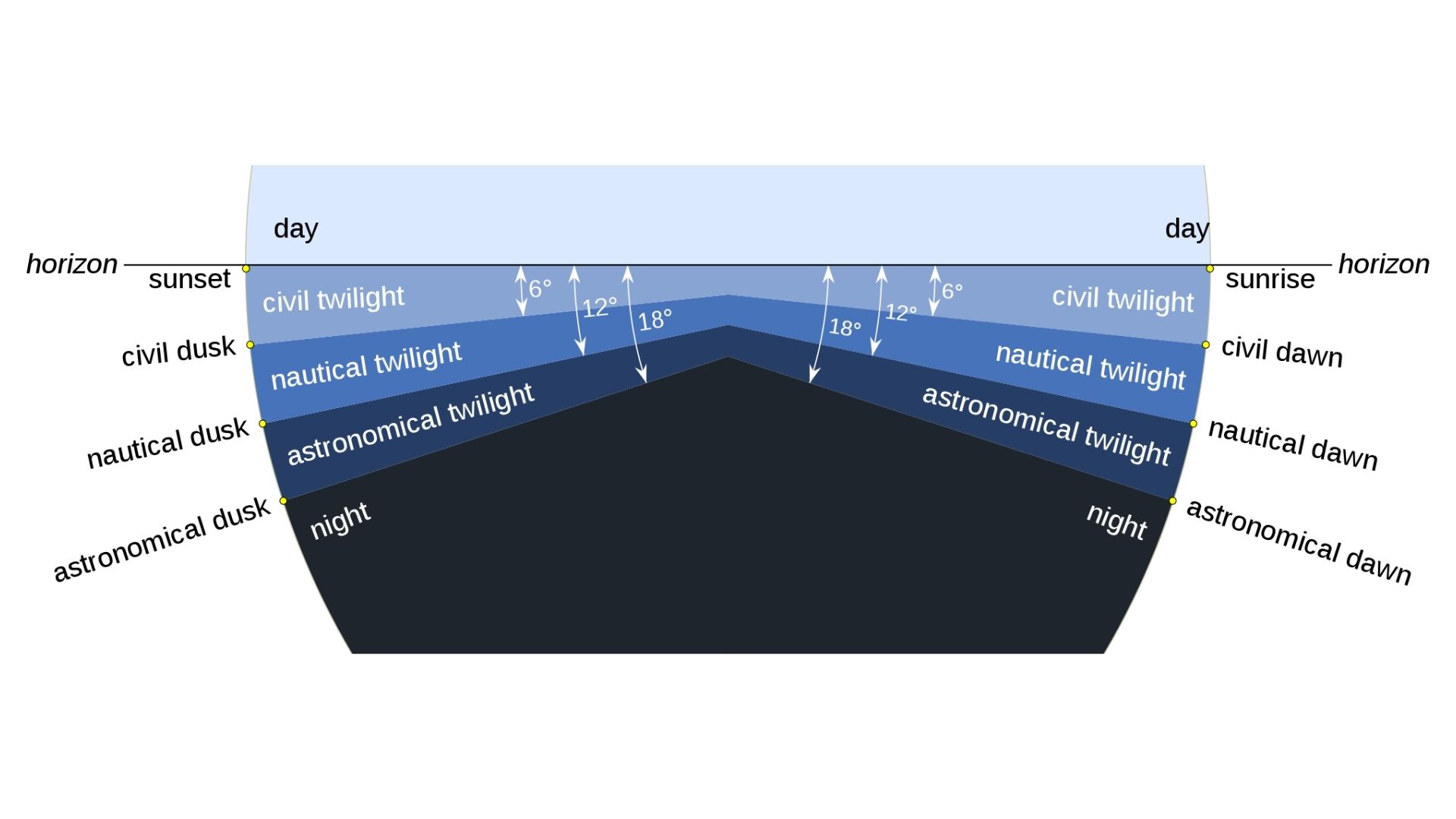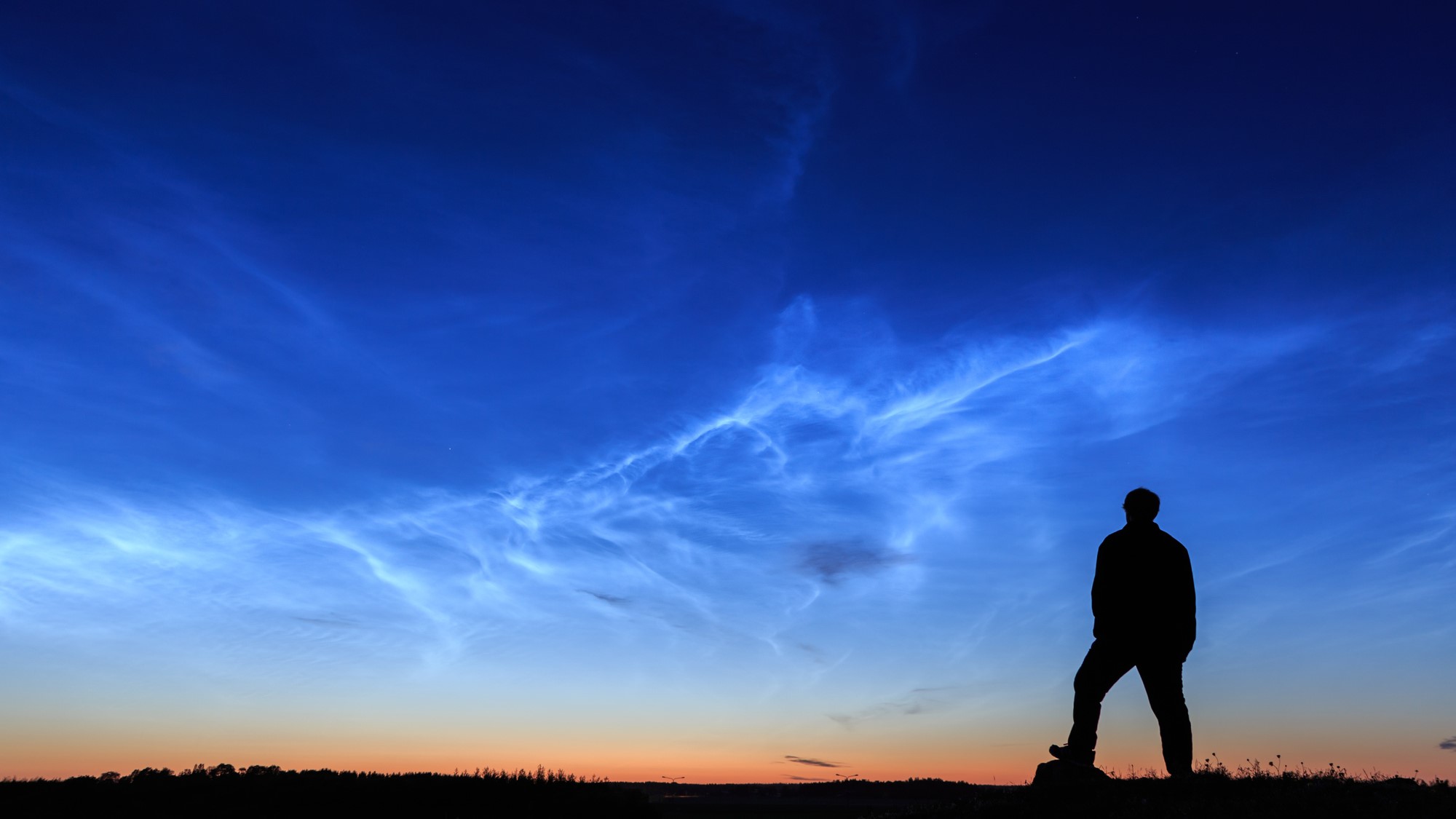What is astronomical twilight?
For astronomers, astrophotographers and casual skywatchers, astronomical twilight is a great time to spot objects in the sky.

Astronomical twilight is a period of time in which the sun is below the horizon but some of its light is still being scattered between air molecules and bounced back to an observer on the surface.
Astronomical twilight generally happens twice each day: It begins in the morning before dawn or ends in the evening after sunset when the geometric center of the sun is 18 degrees below the horizon, according to the National Weather Service (NWS). When the sun is at or above 12 degrees below the horizon, it's no longer astronomical twilight.
During astronomical twilight in an area without light pollution, the horizon disappears from view and even the dimmer planets and some less visible stars can be spotted with the naked eye, according to the NWS. For casual observers and those in urban or suburban areas, the sky may appear fully dark, and viewers can get a good look at objects like planets and stars that appear as a bright point of light. In higher latitudes, rare formations called noctilucent clouds are sometimes visible against a dark twilight sky. However, astronomers wait for truly dark skies to observe galaxies, nebulas and anything else that creates diffuse and tricky-to-spot light sources.
Related: Smartphone astrophotography: How to take pictures of the night sky
When is astronomical twilight today?
Astronomical twilight in your location will vary depending on how close you are to the equator and the time of year.
For example, in winter close to the north pole, astronomical twilight can last for weeks, spanning from late October to mid-November and returning once again in January, wrote astronomer Joe Rao for Space.com. That's because the Earth spins at a slight angle compared to the plane of its orbit around the sun, creating the planet's seasons — during winter in the northern hemisphere, the north pole is angled away from the sun, so the sun lingers between 12 and 18 degrees below the horizon for a long time.
At the equator, however, astronomical twilight is a much shorter period. In fact, according to a 1931 paper published in the journal Geographical Review, all three twilight conditions (civil, nautical and astronomical) take no longer than 2 hours and 11 minutes at the equator on the equinox.
If you're curious about astronomical twilight in your area, you can use one of several different calculators to find out when it will occur:
- BlankCalendarPages.com gives the exact start and end times of astronomical twilight for any location on a given date.
- The National Oceanic and Atmospheric Administration (NOAA) hosts a calculator that will give the exact time of sunset and sunrise anywhere on Earth, but you may have to use NOAA's data to calculate astronomical twilight yourself.
- The calculator from Cambridge in Colour provides the time that the sun reaches 18 degrees below the horizon anywhere on Earth — the after-dusk end or pre-dawn beginning of astronomical twilight.
- Time and Date's sun calculator gives exact time intervals for astronomical twilight for any location on a given date.
What's the difference between astronomical, nautical and civil twilight?

Astronomical twilight is the darkest of the three types of twilight. Together, astronomical, nautical and civil twilight describe the time between sunset and full dark, and between full dark and sunrise.
Nautical twilight occurs before astronomical twilight in the evening and before astronomical twilight in the morning when the sun's geometric center is between 6 and 12 degrees below the horizon. According to the NWS, its name describes its use in navigation at sea. During nautical twilight, wrote the NWS, sailors could both see the horizon and pick out recognizable stars at the same time, leading to reliable readings and a better idea of where they were headed in a featureless sea.
Civil twilight describes the time just after sunset, before the sun reaches 6 degrees below the horizon, or just before sunrise when the sun is above 6 degrees below the horizon.
How do astrophotographers handle astronomical twilight?

Even though the night sky isn't at its absolute darkest during astronomical twilight, plenty of photographers find it a good time to take pictures of the heavens. In fact, some features are best viewed and photographed before full dark, like city skylines and noctilucent clouds.
Related: Planets align over the 'White City' in twilight photo of Tel Aviv
Noctilucent clouds are wispy, high-altitude collections of ice crystals best viewed when the sun is between 6 and 16 degrees below the horizon, according to the World Meteorological Organization (WMO). Unlike cirrus clouds, which look similar but form in the high troposphere, noctilucent clouds appear near the polar regions in the thin, frigid air of the mesosphere, some 53 miles (85 kilometers) above sea level.
Noctilucent clouds become visible at twilight because the sun's light can still reach their high altitudes, highlighting them in a blue or silvery light against a dark sky, horizon and ground.
Additional resources
You can use this mapping tool from TimeandDate.com to find out where on Earth is experiencing astronomical twilight right now. Or, take a look at this photo from NASA that shows the gradual transition from day to night through all the stages of twilight, as seen from the International Space Station. And if you're excited about taking pictures after dark, check out Night Sky Photography: From First Principles to Professional Results by Adam Woodworth (Ilex Press, Feb. 2, 2021).
Bibliography
Boggs, S. W. (1931). Seasonal variations in daylight, twilight, and darkness. Geographical Review, 21(4), 656–659.
Moon & night calculator for photography. Cambridge in Colour. Retrieved April 26, 2022.
National Weather Service. Twilight types. National Oceanic and Atmospheric Association. Retrieved April 25, 2022, from https://www.weather.gov/lmk/twilight-types
NOAA. NOAA Solar Calculator. Global Monitoring Laboratory; Earth System Research Laboratories. Retrieved April 26, 2022.
NOAA. (n.d.-b). Solar Calculation Details. Global Monitoring Laboratory; Earth System Research Laboratories. Retrieved April 26, 2022, from https://gml.noaa.gov/grad/solcalc/calcdetails.html
Sunrise and sunset calculator. Timeanddate. Retrieved April 25, 2022.
Sunrise, Sunset And Daylength For Any City. Blank Calendar Pages. Retrieved April 25, 2022.
WMO. Appearance. International Cloud Atlas. Retrieved May 15, 2022.
Join our Space Forums to keep talking space on the latest missions, night sky and more! And if you have a news tip, correction or comment, let us know at: community@space.com.
Get the Space.com Newsletter
Breaking space news, the latest updates on rocket launches, skywatching events and more!

Vicky Stein is a science writer based in California. She has a bachelor's degree in ecology and evolutionary biology from Dartmouth College and a graduate certificate in science writing from the University of California, Santa Cruz (2018). Afterwards, she worked as a news assistant for PBS NewsHour, and now works as a freelancer covering anything from asteroids to zebras. Follow her most recent work (and most recent pictures of nudibranchs) on Twitter.









